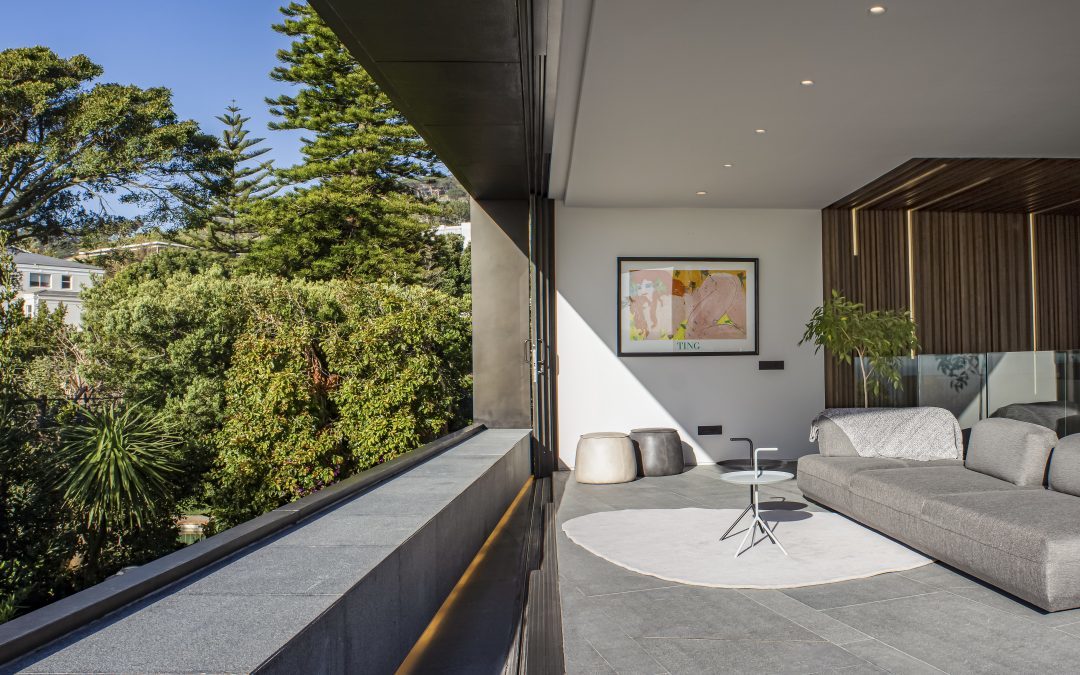The idea of a pavilion typology informed this boutique project where the structure is kept to the minimum, materiality is celebrated, and spatial boundaries are blurred. The morphology of the cottage is brought to life by two, thin floating planes stacked on top of each other, jutting out into the surrounding lush garden.
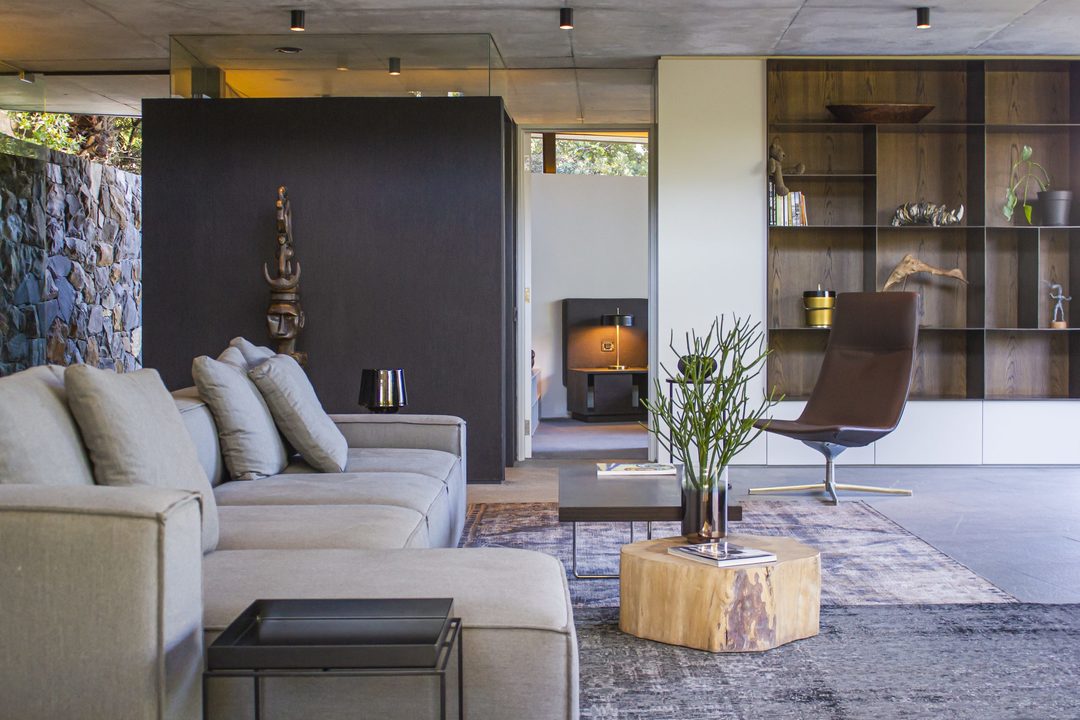

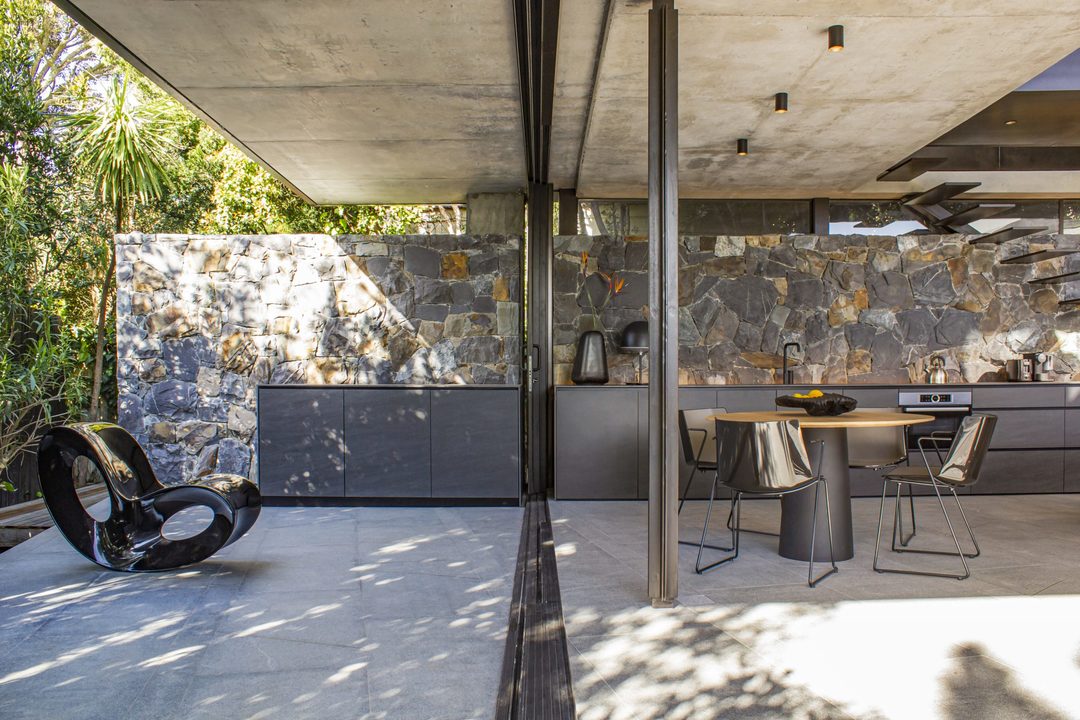
Striking in its dark colour and angled composition that characterises this recent addition to the series of buildings by the same firm for this same family, the pavilion-like structure is situated above the original main house.

The client, whom Wright Architects has been fortunate to have worked with on many architectural ventures, has always had a keen eye for design and a passion for pursuing architectural projects that push the design envelope; resulting in feats that are both award winning and find their way into an array of magazines and online publications.
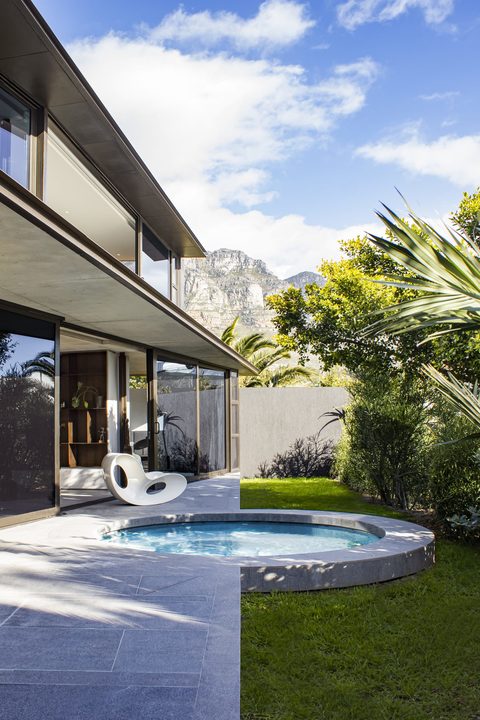
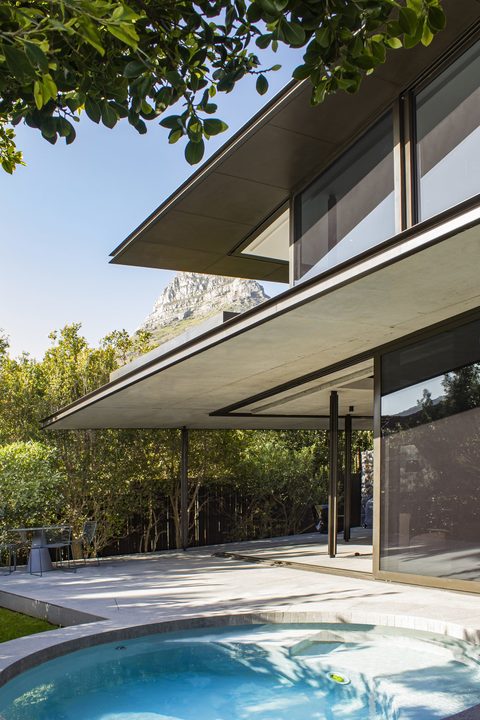
This project is no exception and is another chapter in a legacy of architectural endeavours. The addition of the pavilion was recently completed on the client’s existing property with the main house below (also by Greg Wright Architects).
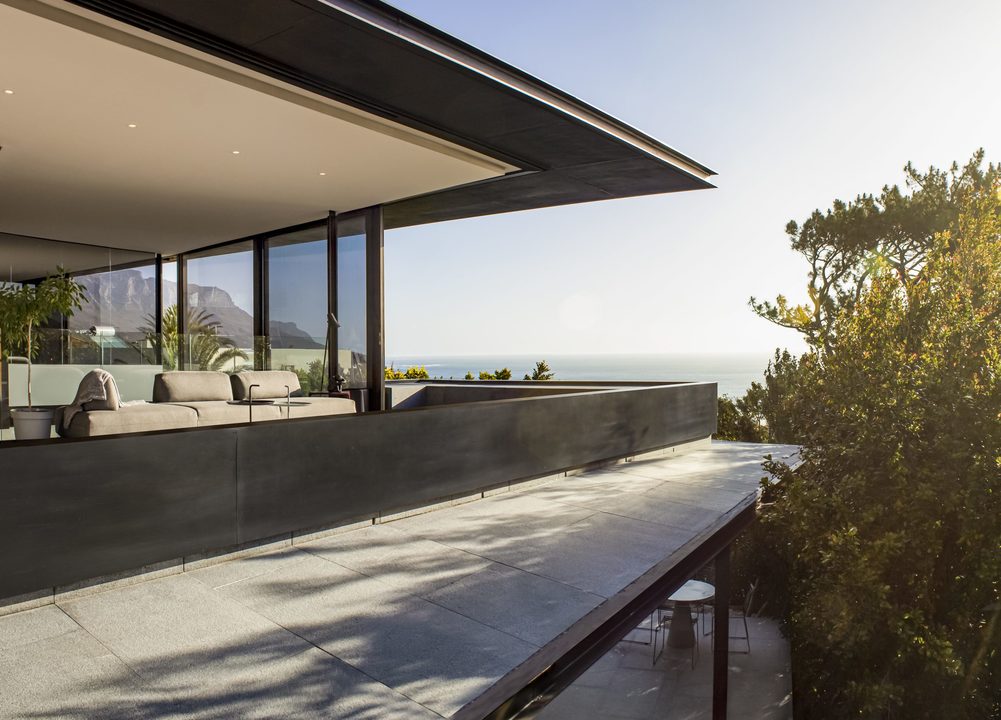
The illusion of these floating planes is accentuated by levitating them from the perimeter stone walls by means of discreet steel columns, achieving the light and open structure characteristics of a pavilion structure.
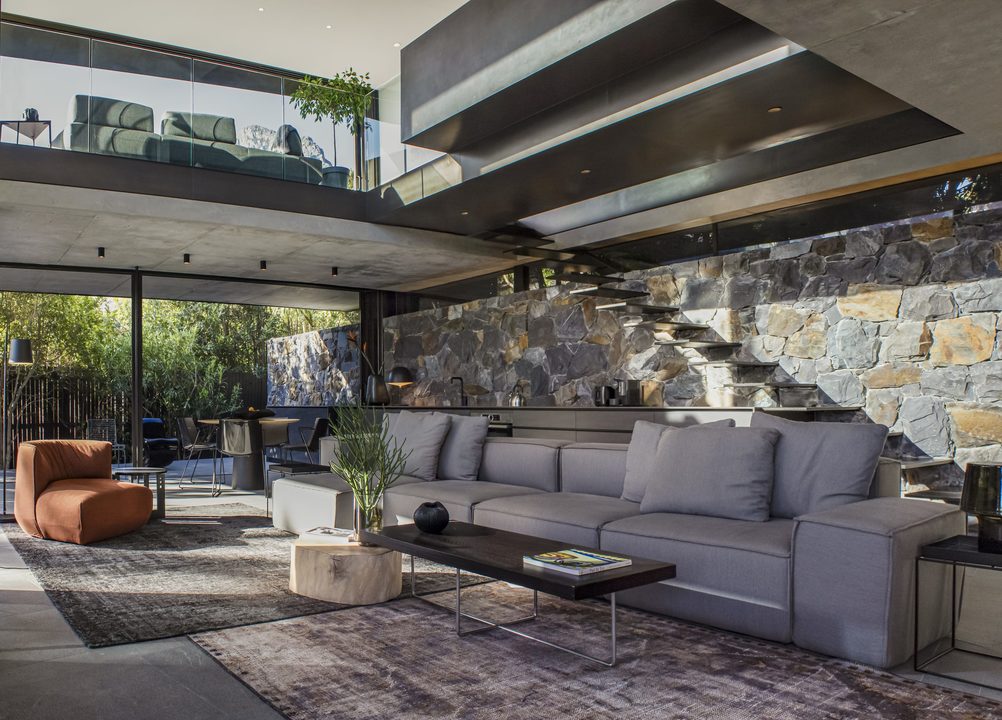
The topography of the area is taken into account with focused and considered views ranging from the west facing façade, which opens up to the Atlantic Ocean, to the first floor, and to the terrace that gazes upon the iconic Lions Head and the framed views through the clerestory windows of the 12 Apostles mountain range.
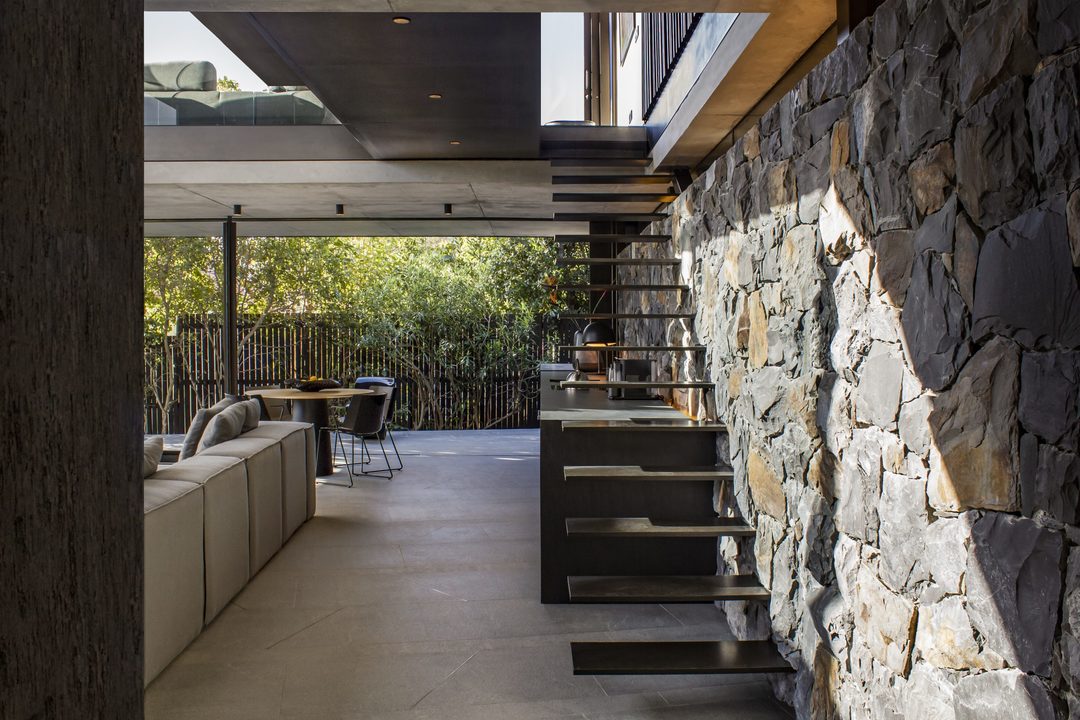
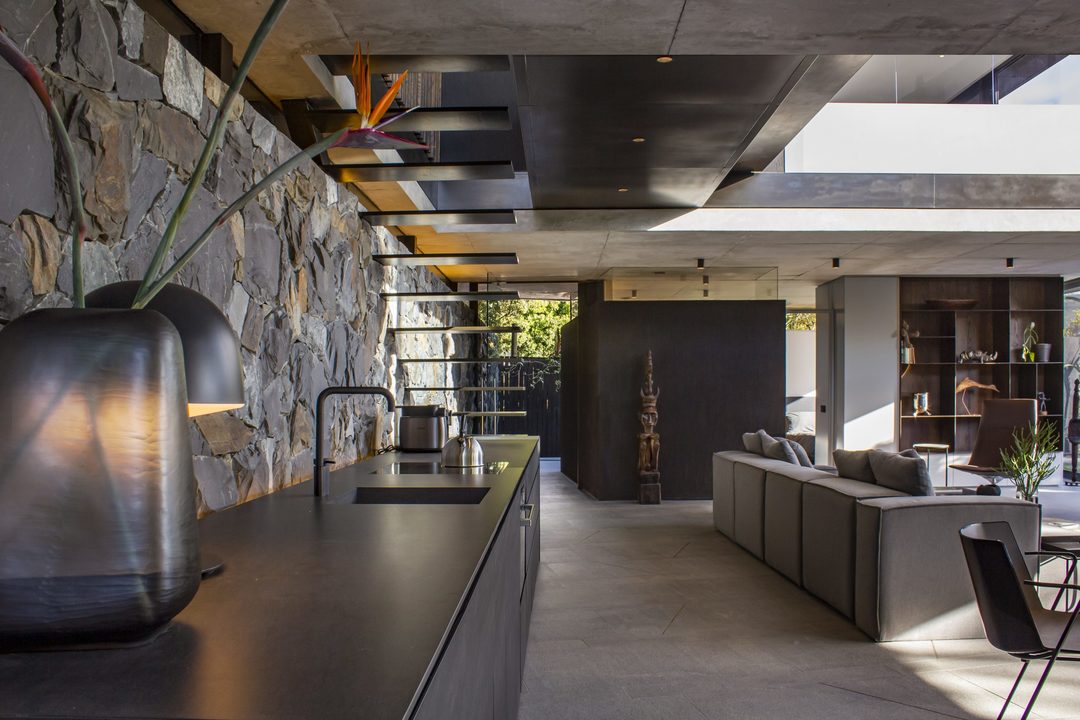

The choice of a dark palette in colour and materials is a reference to the main house with the earthy greys, black and bronze of the stone wall getting picked up throughout the building.
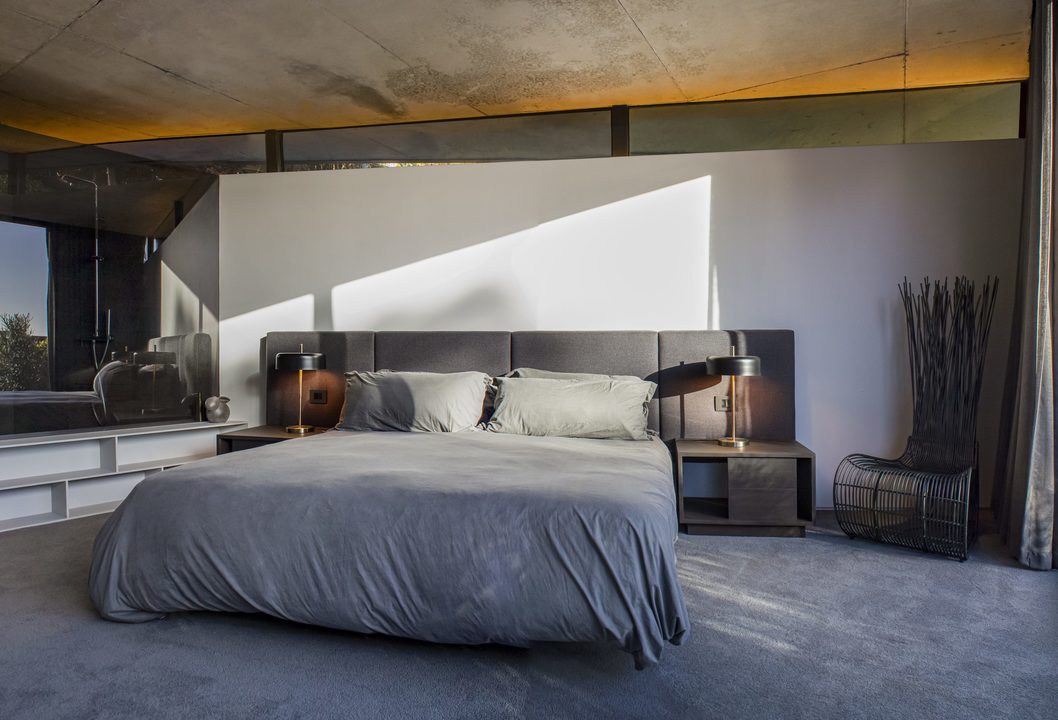
The floor tiles subtly reinforce the geometries of the primary structural elements, whilst fragmenting the tiling pattern with the introduction of brass in-lays that extend vertically into the en suite bathrooms that are accentuated by the late afternoon golden light.
In keeping with the idea of a pavilion, the threshold between interior and exterior becomes blurred by means of large sliding aluminium doors that, when opened up, provide a sense of diffusion and expanse into the exterior landscape.


Interior furnishings, form and selection of materials and colour are carefully orchestrated to work in harmony with the architecture and to complement the aesthetic experience.
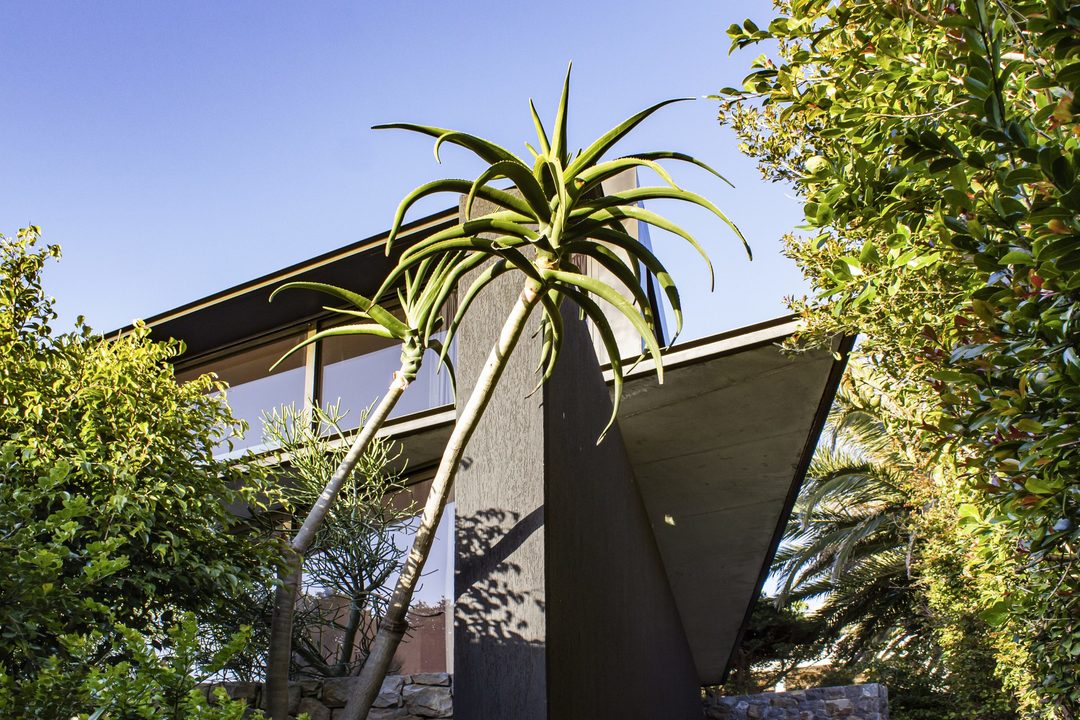
credits:
project name: Cranberry Pavilion
architecture: Wright Architects
principal architects: Greg Wright & Suzaan De Kock
location: Camps Bay, Cape Town
built area: 164 square metres
site area: 1 210 square metres
photography: Christian Cooke
visualisation: Gert Coetzee
design team: Greg Wright, Suzaan De Kock & Gert Coetzee
interior design: Mazel Interior Design
project duration: 2016 – 2020
structural engineer: Poise Design
lighting: Wright Architects

